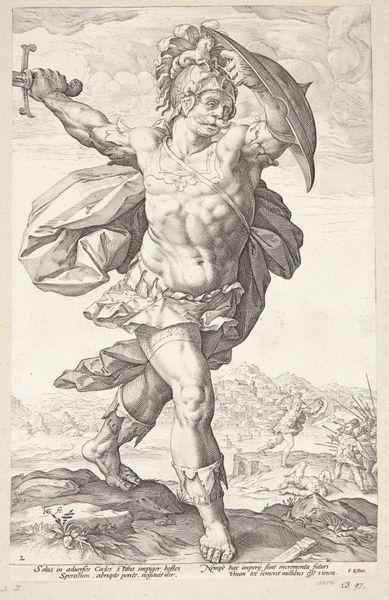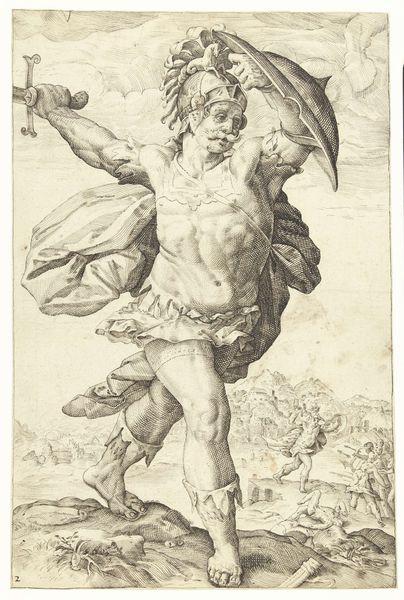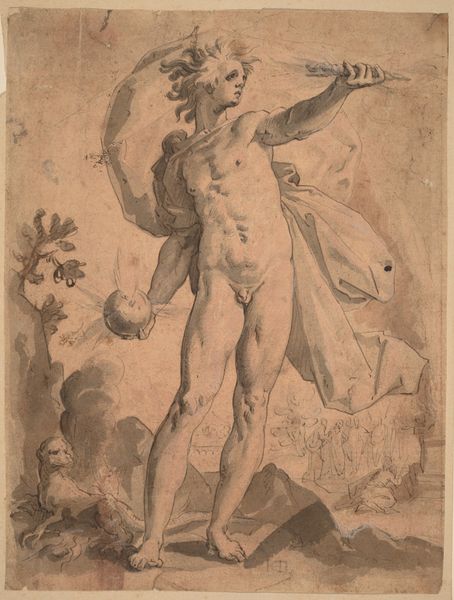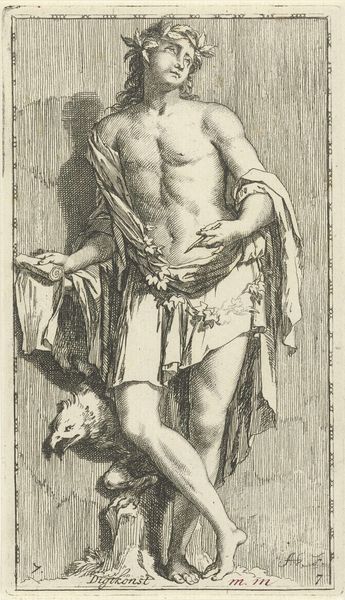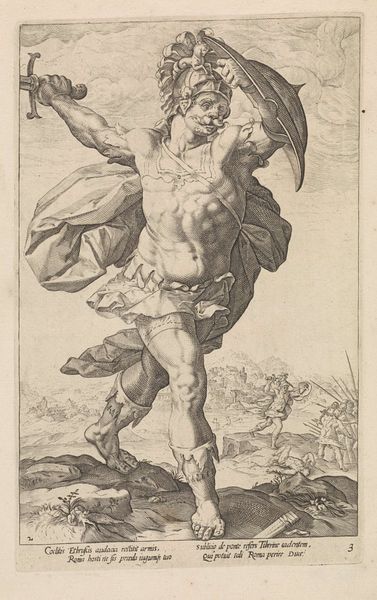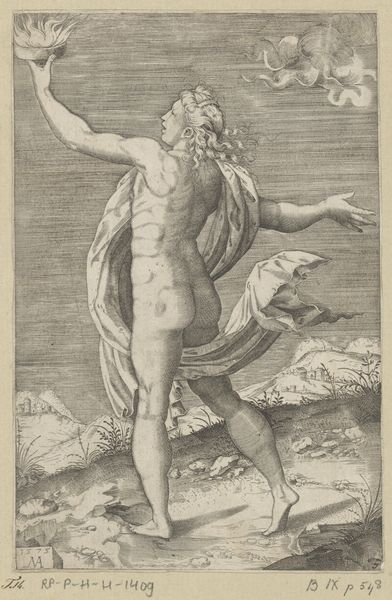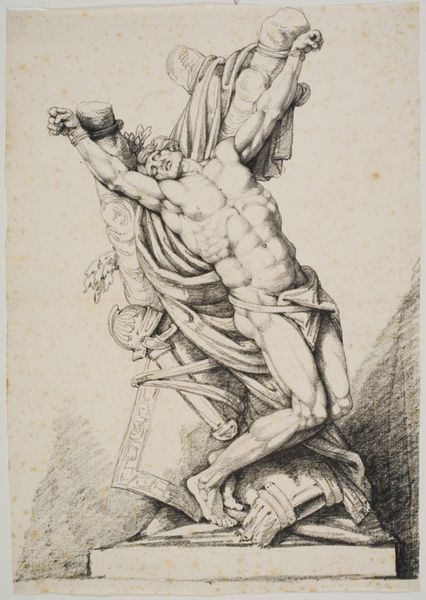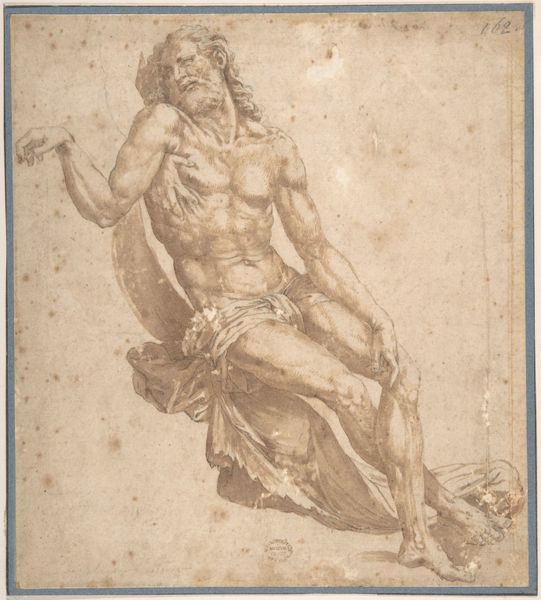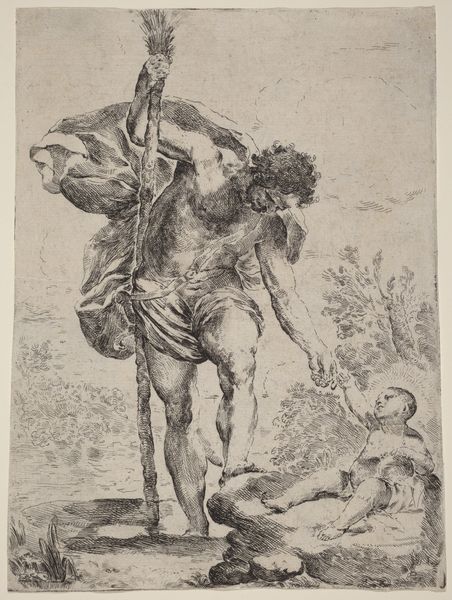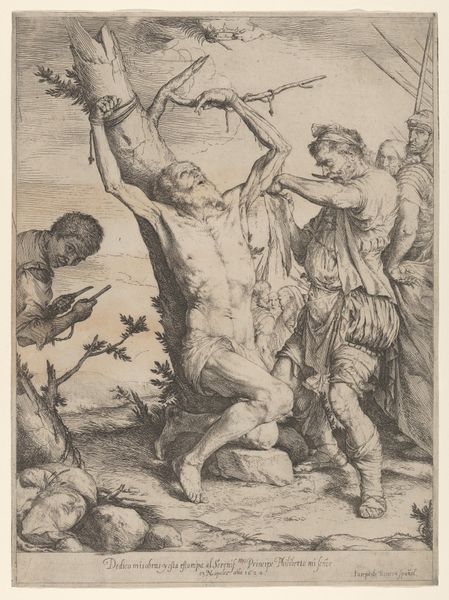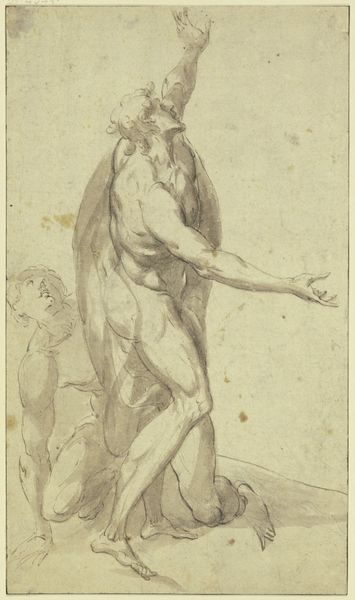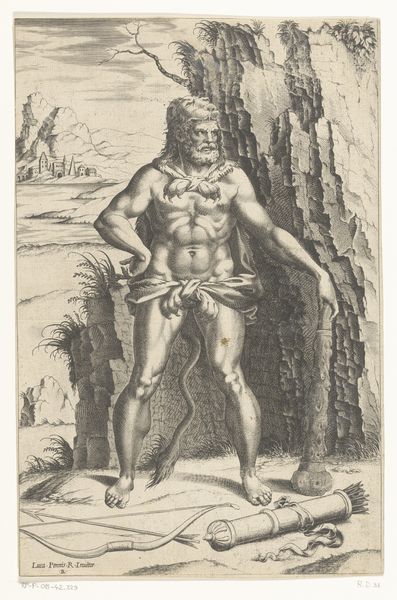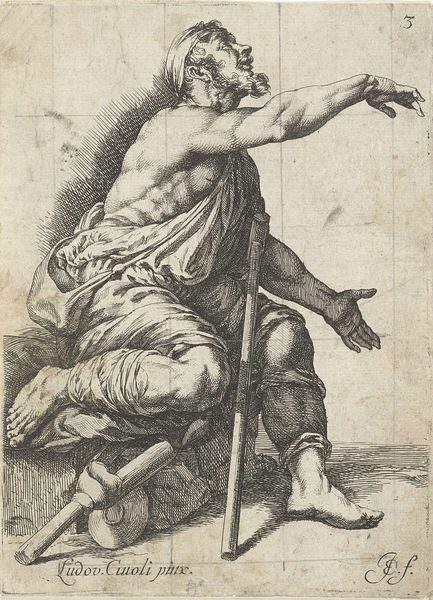
The Martyrdom of Saint Sebastian, with angels crowning him at upper left 1615 - 1637
0:00
0:00
drawing, print, engraving
#
drawing
#
baroque
# print
#
figuration
#
history-painting
#
nude
#
engraving
Dimensions: Sheet (Trimmed): 6 7/8 × 4 1/4 in. (17.5 × 10.8 cm)
Copyright: Public Domain
Curator: Here we have Willem Panneels' "The Martyrdom of Saint Sebastian, with angels crowning him at upper left", dating roughly from 1615 to 1637. It’s an engraving, currently held at the Metropolitan Museum of Art. Editor: It's strikingly dark. The tonal range is quite limited but intensifies the emotion and suffering, a stark black and white composition overall. Curator: The engraving technique allows for incredibly fine lines and detailed shading, crucial to Baroque aesthetics and to render the muscular form of Sebastian. Think of it not merely as an image but as an accumulation of labor—the scratching, the inking, the pressing—repeated across many impressions. Editor: Labor is certainly evident. You see how the engraver renders light emanating from the cherubic figures, almost theatrically staged. Semiotic consideration of martyrdom presents certain power structures embedded within religious history paintings. Curator: Indeed. The lines almost vibrate around the angel. We’re presented with a visual hierarchy—celestial beings descending, Saint Sebastian in physical torment, a landscape receding into obscurity. Each stroke builds this symbolic narrative. Editor: Consider also, though, the physicality of the process, this contrasts sharply with the heavenly presentation. This print required a press, paper, ink—raw materials obtained and processed. This print transforms natural materials into artifacts of immense cultural weight. How much labour and organization lies hidden? Curator: Good point! You prompt me to consider the textural depth; the material qualities do influence the overall emotional tenor, certainly. But more than just material, the artist also utilizes rhetorical tropes. The idealized body of Sebastian—classical sculpture translated into the language of engraving... Editor: Well said, the convergence of the aesthetic and material considerations are always relevant, reminding us that cultural values are deeply entwined with materiality and the socioeconomic contexts of its creation. Curator: And the visual form, in turn, allows those material concerns to achieve a timeless kind of beauty. An efficient representation of the paradox of human and holy.
Comments
No comments
Be the first to comment and join the conversation on the ultimate creative platform.
